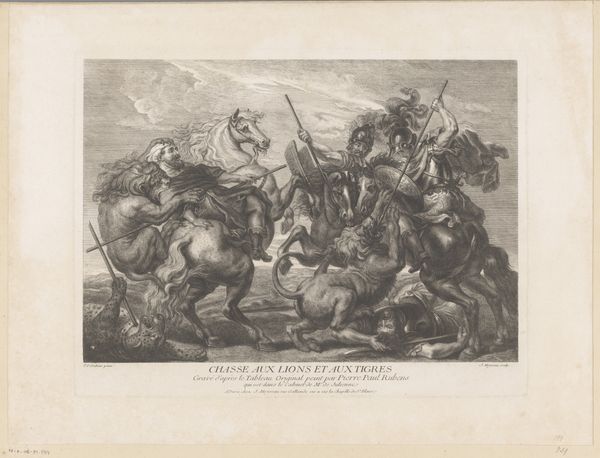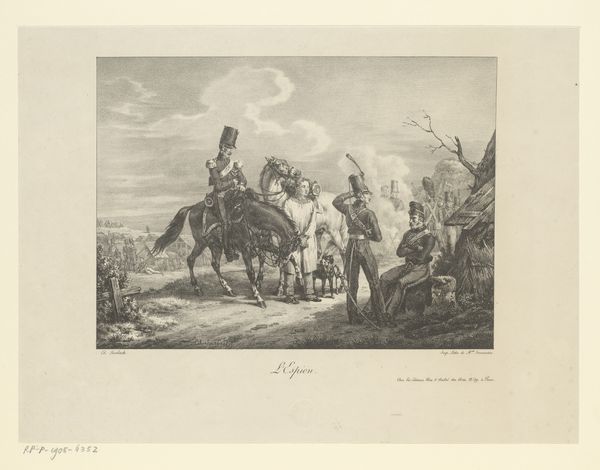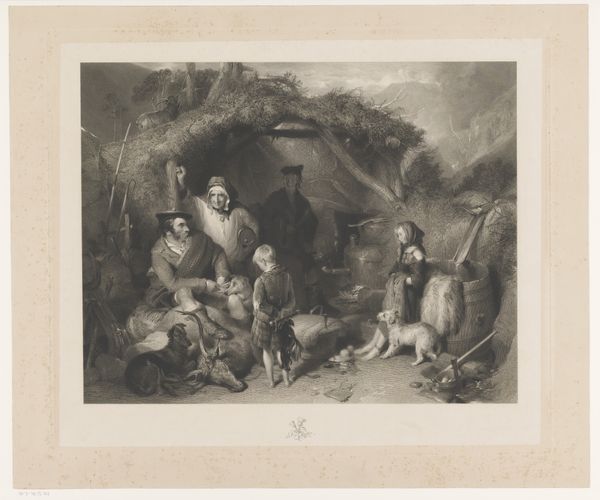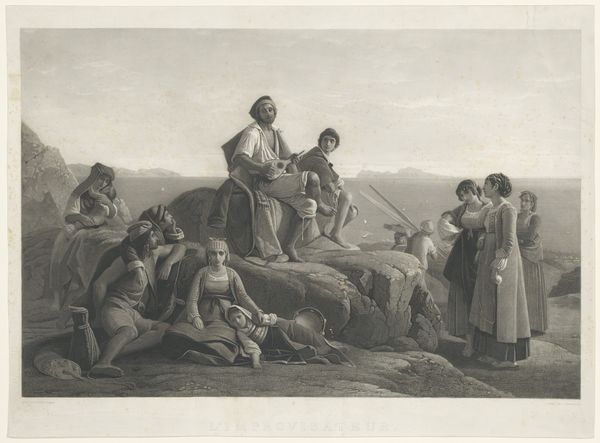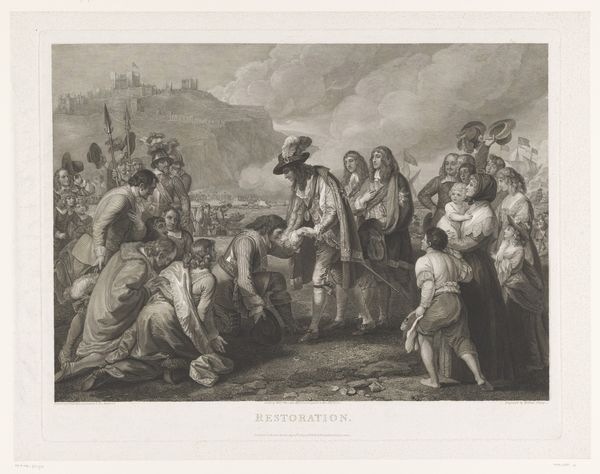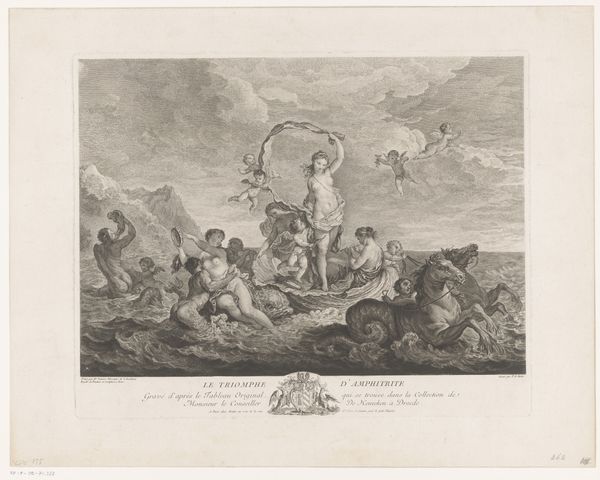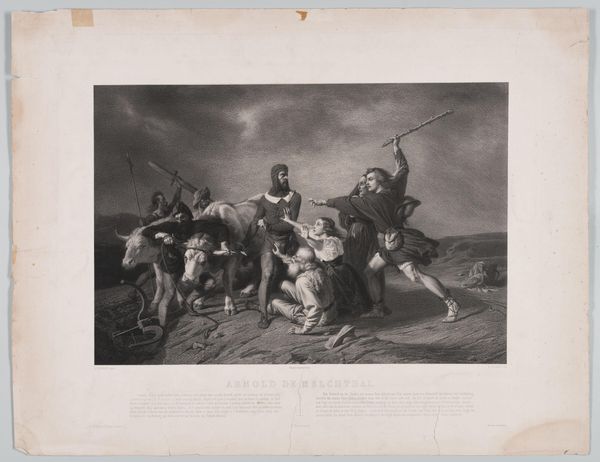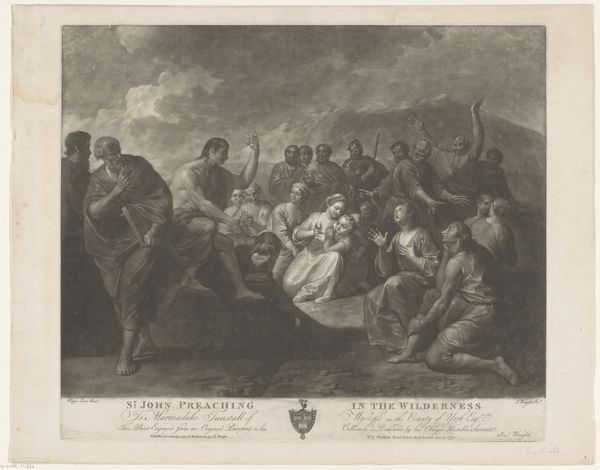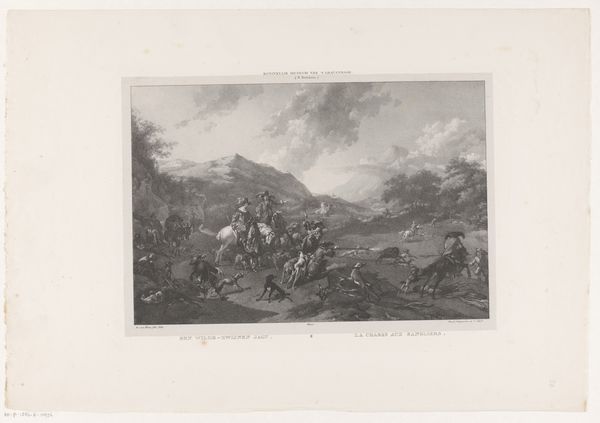
drawing, print, pencil, engraving
#
pencil drawn
#
drawing
#
light pencil work
#
narrative-art
# print
#
pencil sketch
#
figuration
#
pencil drawing
#
pencil
#
pencil work
#
history-painting
#
engraving
#
realism
Dimensions: height 459 mm, width 658 mm
Copyright: Rijks Museum: Open Domain
Editor: So, this is "Moses Striking Water from the Rock" by Alphonse Boilly, made in 1862. It’s a pencil engraving or print. There's so much detail despite it being black and white! What jumps out to you when you look at it? Curator: The engraving itself becomes the subject for me. Think about the labor involved in its creation. Each line meticulously etched, a process demanding immense skill. It's not just depicting a miraculous event; it’s about the *making* of that depiction. How does the process of mass reproduction via print affect the reception of the biblical story itself? Editor: I never thought of it that way. The original image has such religious significance; but making it an engraving changes it. How so? Curator: Exactly. The image transitions from a unique, potentially sacred object, to a commodity available to a wider audience. Consider who has access to this image, what are they able to own and consume, and why? And then compare the different mediums used – the original is a drawing and this is an engraving, intended to be infinitely reproducible. Editor: So, you're less focused on the "miracle" aspect and more on the societal implications of reproducing and distributing images of it? Curator: Precisely. We must remember this piece as it’s material, as well as considering the consumption habits and implications from the art’s period. Editor: That makes a lot of sense. I’ll definitely consider the production aspect more closely when looking at prints from now on! Curator: Indeed. Recognizing the materiality is the first step to unpacking the broader socioeconomic narratives.
Comments
No comments
Be the first to comment and join the conversation on the ultimate creative platform.

